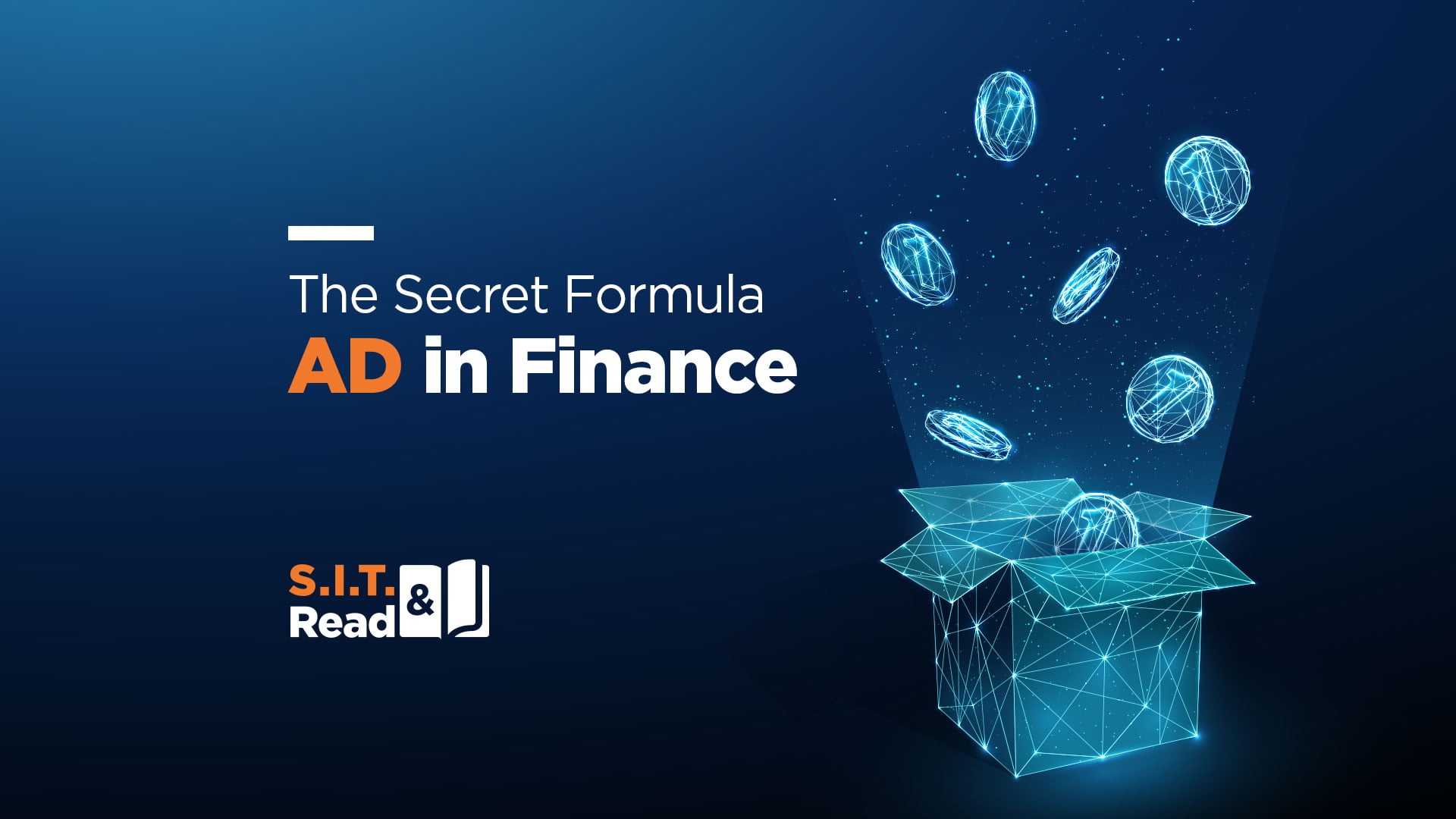Some years ago, we were invited to work with a large Chinese bank in Singapore. The bank’s challenge was that banking products are heavily regulated, and almost identical, and therefore the market was saturated. Coming up with new and attractive saving and personal loan product was almost impossible. We were sent to work in an effort to enrich their pipeline with differentiated products.
Finance is an extremely controlled category; these heavy and strict regulations make innovation seem harder (a perception we understand but disagree with 😊) and create very little divergence in offerings. Furthermore, given that the banking industry has been operating for over two hundred years, it is fair to assume that people in this field will carry a lot of cognitive bias regarding the ways business is done.
Given this context, some would have passed on this proposal. However, at SIT, we really like these types of challenges.
Who said that innovation is easy work😊?
While preparing for the project, we reviewed many banking products and financial tools, both old and new, realizing that from the point of view of innovation, there are many developments around automation, accessibility, and accuracy, but not many about the way these tools are used or how their value is perceived. In one of our interviews with the team before the workshop started, a team member even said to us explicitly: “a loan is a loan is a loan! There is not much to change or invent here…”.
For us, at SIT, this comment was a good provocation – we wanted to find out how our tools can be effective in changing this preposition.
So, let’s turn our attention to Cognitive Fixedness. In this case, we want to delve into Relational Fixedness – or the tendency to view relationships and dependencies between variables of a situation, as static and permanent. A simple and common way to illustrate this type of bias will be by looking at the price of alcoholic beverages in a bar: back in the days, the price of a pint of beer, for example, was determined by its cost, popularity, and expected profit margins. This was uniform across the world. Imagine that at some point, someone, thought that it might be more attractive to customers to create a new ‘relationship’ between, say, the cost of the beverage and the time of day(!). In this new relationship, two variables (cost of the beverage and time of day) were put together to create a new set of possibilities – the price will change according to the time one order or pay for one’s drink. This can be applied in several configurations: at given hours the price will go up (possible value could be to decrease overflow of customers or to generate premium in peak hours), the price can go down in some hours of the day (possible value could be to increase visits and consumption on the ‘slow’ hours of the afternoon and early evening, the price will change according to shift-time, light time and nighttime, etc. By now, you have probably guessed – we are referring to the now-well-known idea of Happy Hour – when price is dropped in the slow hours in bars.
Sometimes people come up with ideas and solutions that create these types of new connections, but when this happens, the concept of creating a “relationship” or “dependence” is usually intuitive and implicit in the idea, rather than leading to it.
In our world of innovation, one of the most powerful and interesting tools that we use, is designed to achieve exactly this: Attribute Dependency is a thinking tool that can create an infinite number of new ‘relationships’ based on the variables you choose. It does so in a structured and organized way, that is useful in two respects: by helping you manage many possible configurations (pre-ideas) in a short time, and given its systematic nature, it suspends your intuition and forces you to consider possibilities that are unique and counter intuitive.
What do these concepts have to do with our innovation project? During preparations, we noticed that checking, savings, and loan products are often constructed by creating relationships between two or more variables. For example – the value of a savings account is determined by the relationships between (1) the saving sum, (2) the saving period and (3) the paid interest. Traditionally, these were the only variables that are considered. Now, understanding that this was due to some kind of Relational Fixedness, it should be very interesting to see what happens if we change the existing relationships and also bring in more variables.
And this is exactly what the team did. The project team, a mix of product, market, service, finance, and IT experts, started to collect many different attributes. We made a point NOT to choose or priorities any of the new attributes, mainly because we didn’t want to limit ourselves to only ‘reasonable’ and ‘logical’ ideas. This is based on the SIT Function Follows Form (FFF) principal that ensure that you will first create a “virtual Idea” and only than work on making business sense out of it. It leads into combinations and configurations that are counter intuitive, hence – considered highly innovative. Most of the work was around this idea of creating, very systematically, new relationships between internal attributes (variables that we, the Bank, can control or influence) and external attributes (variables that we, the Bank, cannot control or influence), and trying to identify unique value propositions.
The project ended up with many exclusive and valuable ideas, as well as with a long list of insights and future opportunities. This motivated us to research and validate our discovery that that many, if not all, banking product and financial instruments are easy to explain with the SIT thinking tool of Attribute Dependency.
Furthermore, the SIT tool is not only good in explaining the way these product and services are constructed, but in giving us a structured and systematic way to manipulate and change the existing products. Breaking relational fixedness make these new offerings more unique, valuable, and exciting.
Back to the project with the bank, here are some ideas that best illustrate the value in using SITs’.
Please note that ideas are shared because they were both new and unique at the time, AND were believed to be commercially viable by the experts in the room:
— A savings account, where the Tier of interest and Type of Transaction were connected – the more scheduled transactions you conduct, the higher the rate of interest you receive.
- Value for the customer: good for cash management, higher interest, rewarding the client for being organized
- Value for the bank: strong point of differentiation, motivates clients to be more organized
— A checking account, where the Type of Transaction and Type of Statement were connected – a customer that owns an account with many different transactions and a higher rate of activities will get a very detailed statement, with high resolution info, analytics, and recommendations. A customer with similar account but with low number of activities and simple, routine transactions will receive a brief and minimal statement.
- Value for the customer: the more sophisticated you are, the more involved, the more information on different channels you will receive. It also contributes to one’s self- esteem and prestige. For account owners with ‘simple’ checking accounts, the promise is to relieve them from these long, standard, high-resolution statements.
- Value for the bank: strong point of differentiation, feeds the bank with insights for high-profile customers, that in turn will lead to more successful sales.
— The Network Effect (today we will probably call it “the influencer model” 😊) – connecting Number of Other Bank Customers You Have Business Interaction With, and the Types of Discounts, Gifts and Status Points you get.
- Value for the customer: discounts, gifts, and status points, as well as being perceived as well-connected and trusted.
- Value for the bank: strong point of differentiation, encouraging relationships among clients, establishing and managing communities, and reducing risks by adding social context to working with the bank.
By recognizing the underlying structure of all financial products and instrument, and connecting it to an innovation tool, we felt that we ‘cracked’ the Secret Formula for these types of products.
Since then, we have used this approach many times in creating new products and services, business models and application. This ability, of systematically generating many unique ideas in very short time, in a format that combines both the ‘what’ and the ‘how’, yields concepts and configurations that are later on easy for management to access, approve, and implement.
It is good to remember that Relational Fixedness is present in many other aspects of our lives and is not limited to banking products and financial instruments. Can you think of other industry sectors that can be explained by AD?
